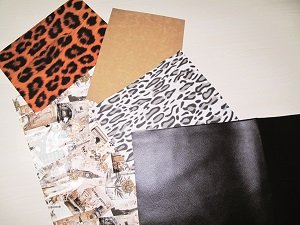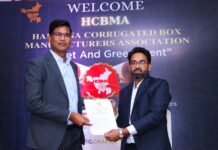
Roto Master was established in May 2016 by an experienced team of industry professionals, including YU Reddy, the company’s CEO, a veteran of the cylinder-making industry. Roto Master is gaining in reputation for manufacturing quality cylinders for gravure printers which are mainly used for the fast growing flexible packaging. The company is already producing over 800 cylinders a month which it supplies to customers all over the country. Packaging South Asia met YU Reddy and Sanchit Bansal, director of the company, at their plant in Ballabhgarh, Haryana to catch up with progress made by this new company and
how it looks at the future.
Capacity overhaul in the very first year

Roto Master initially installed two Hell electronic gravure cylinder engraving machines but soon realized that this capacity wasn’t enough to meet the fast-growing demand for cylinders. Already inundated with orders in just their first year of operation, the company commissioned their third engraver, a Dynamic Motivated Alliance (DMA) engraving machine, a German technology machine marketed from Taiwan. Highly impressed with the features and performance of this electronic engraver, Reddy has already ordered another DMA machine which will be the company’s fourth engraver installed in the space of just over a year.
Reddy spoke of some critical parameters which he says are the reasons why he prefers the new DMA engraver. To begin with, it is about 30% faster and has a much better engraving head and offers better text enhancement. It uses open source software for the entire process and works equally well on Mac and other computer platforms. Besides, it uses PDF imaging, which Reddy says is better for text clarity as compared to TIF files.
Cylinder-making process
Reddy says that he was among the pioneers of electronic cylinder engraving in India following his training in Ohio, in 1990. He explains that the process of cylinder-making starts with the design reference that is provided by the customer. It includes the design layout, color separation, color resolution, color application, color correction, font selection, and other aspects of the design. Thereafter, all the customer’s inputs are integrated in the dimensions of the cylinder, and sent back as a PDF file to the customer for approval.
After approval, the actual process begins with the manufacture of the base shell which is normally made of mild steel cut and rolled to size. Alternatively, prefabricated pipes meeting the required dimensions of the cylinder are used.
This basic structure then undergoes a process of grinding till it is ready for nickel-plating, followed by copper plating on which the engraving takes place. Finally, the cylinder undergoes chrome plating, which marks the completion of the process. In terms of scale, if one job is to be printed in eight colors, eight cylinders would have to be manufactured. Reddy explained that several layers of plating are necessary as mild steel does not bond well with copper although nickel bonds well with both mild steel and copper.
Roto Master cylinders enhance food safety
Roto Master cylinders plays a part in improving safety standards in the packaging industry. Reddy says, “As a cylinder maker, we have to study the packaging substrate (film or laminate) well because the design of our cylinder is based on what that substrate is going to be. While developing a design we have to remind the printer about certain government norms, especially end user guidelines like disposal of the plastic package and some others. These user guidelines should also be engraved on the cylinder so that they get printed on the substrate which could be the package itself or a separate label that is pasted on the package. The role of cylinders has a major impact on product labeling, especially in food packaging.”
Reddy further said that it is not just the substrate that Roto Master needs to know before making a cylinder, but also the ink that would be used on the substrate. This is a mandatory requirement that the customer must comply with. The kind of substrates and solvents used by many printers do not often meet the standard requirement.











